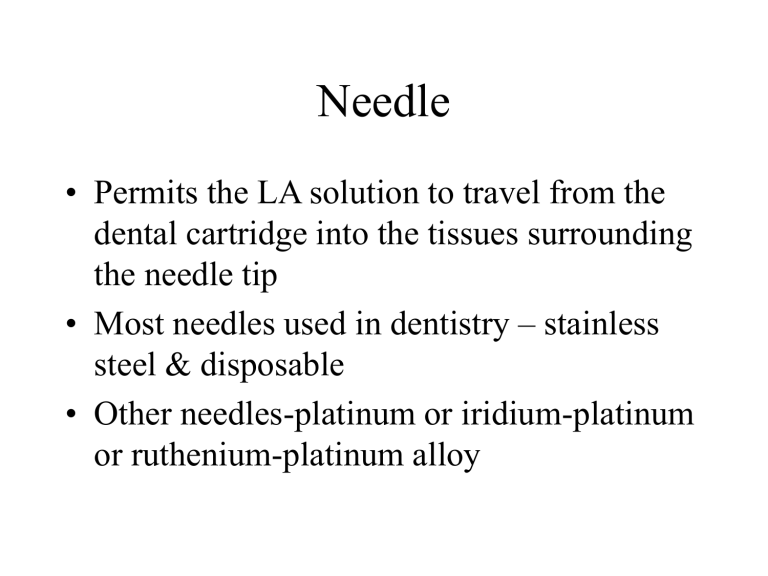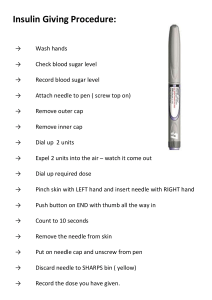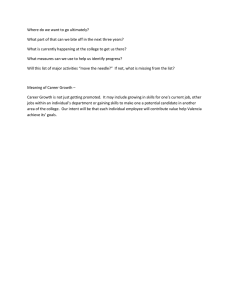
Needle • Permits the LA solution to travel from the dental cartridge into the tissues surrounding the needle tip • Most needles used in dentistry – stainless steel & disposable • Other needles-platinum or iridium-platinum or ruthenium-platinum alloy Parts • Bevel-Point or tip of the needle • Shaft-Long piece of tubular metal running from tip of the needle through hub & continuing to the piece that penetrates cartridge • Hub-Plastic or metal piece through which needle attaches to syringe • Cartridge penetrating end-Perforates the diaphragm of the LA cartridge Gauge • The diameter of the lumen of the needle • Smaller the number ,greater the diameter of the lumen • 25 gauge needle is the preferred needle for all injections Advantages of larger-gauge needles over small gauge needles • Less deflection occurs as needle passes through the tissues • Aspiration of blood is easier • Greater accuracy of injection • Less chance of needle breakage Length • 2 types – short & long • Average length of short needle is 20mm & long needle is 32mm • Long needle is preferred for all injections where the penetration of significant thickness of soft tissue is needed ( eg : inferior alveolar nerve block,Vasirani Akinosi,Gow-Gates mandibular,infra orbital & maxillary nerve blocks) • Needle should not be inserted into the tissues to their hubs unless it is absolutely neccesary for the success of injection • If a needle inserted till the hub breaks,the elastic properties of the tissues permit them to rebound and cover(bury)the needle entirely Care & handling • Needles must never be used more than one patient • Should be changed after 3 or 4 injections in same patient • Should be covered with a protective sheath when not being used • Must be properly disposed off after use • ‘’Scoop’’ technique for recapping the LA needle must be used Problems • • • • Pain on insertion Breakage Pain on withdrawal Injury to the patient or administrator


